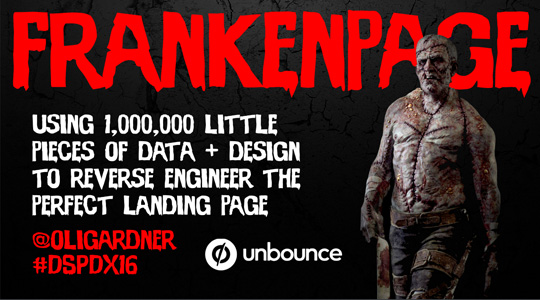For the first time ever, Digital Summit made its way to Portland, Oregon, and #DSPDX16 was born.
Food, drinks and networking aside, one has numerous expectations when deciding to attend a conference. What it all really boils down to, though, is wanting to walk away feeling inspired. Walking away with that aha! moment. Walking away with an arsenal of tactics and processes ready to be unleashed.
While the providing of inspiration was certainly achieved by numerous speakers, finding actionable takeaways was sometimes difficult — and it was primarily due to conference structure.
Each session (minus keynotes) clocked in at 30 minutes. During any given session, there were two other sessions running simultaneously in different rooms.
Unfortunately, 30 minutes is rarely enough time to truly explore a topic.
As soon as a speaker began to dive deep into the nitty-gritty of a topic, time had just about elapsed.
It was clear that Jim could have easily continued talking about “links” and “link building” for hours.
(To his credit, though, he made the most of the time available to him.)
Fortunately…
Time crunch aside, several speakers really stood out. Not only did they deliver the goods, they had clearly planned their presentations to fit within the allotted time.
Oli Gardner
Humor. Delivery. Takeaways.
This was a shining example of how to make an impact just 30 minutes.
Oli’s presentation included data and information regarding distractions, conversion rate vs. the number of links on a page, conversion research via 5-second tests, information hierarchy, visual clarity, conversion rate vs. number of form fields, what should/shouldn’t be above/below the fold, conversion rate vs. form distance, and much more.
Fun tip:
Want to try mocking up page variations on any website? Navigate to the page you want to edit, then enter the following code in your address bar:
javascript:document.body.contentEditable='true'; document.designMode='on'; void 0You will now be able to highlight text, edit it, etc., then take screenshots of each variation and use them during your conversion research to see which variation(s) people prefer.
Quinn Whissen
Quinn did a fantastic job showing proof of success and outlining an approach for replication.
Her presentation can found in its entirety at this link.
In short, the takeaway is to capitalize on pages already sending organic traffic via keywords ranking on pages 2-4 of Google, consolidate pages with identical search intent via 301 redirects, and improve each “final” consolidated page by filling content gaps with information that both addresses search intent and includes additional targeted/semantic keywords.
Rand Fishkin
Rand presented day one’s afternoon keynote and was allowed an entire hour to really dig into the SEO trends of 2016.
The results did not disappoint. View his presentation in its entirety below:
TL;DR? (even though you most definitely should)
Here are the seven biggest SEO trends in 2016:
- Google’s still growing, but others are, too
- Google now works to answer simple queries directly rather than make users click
- Keyword data is more obfuscated, less reliable, and less accessible
- Twitter has replaced Google+ as Google’s primary social result
- There are more non-traditional ways to get into Google’s results than ever before
- Matching searcher intent > matching searcher keywords
- Machine learning and engagement are Google’s future
#DSPDX16 Constructive Feedback
It would be extremely helpful if, in the future, Digital Summit lists both the ideal target audience for each session and the skill level for which each presentation is best suited. On numerous occasions, session expectations and reality didn’t align.
Overall, though, the experience was memorable. It’s great to have another conference make its way to Portland.



